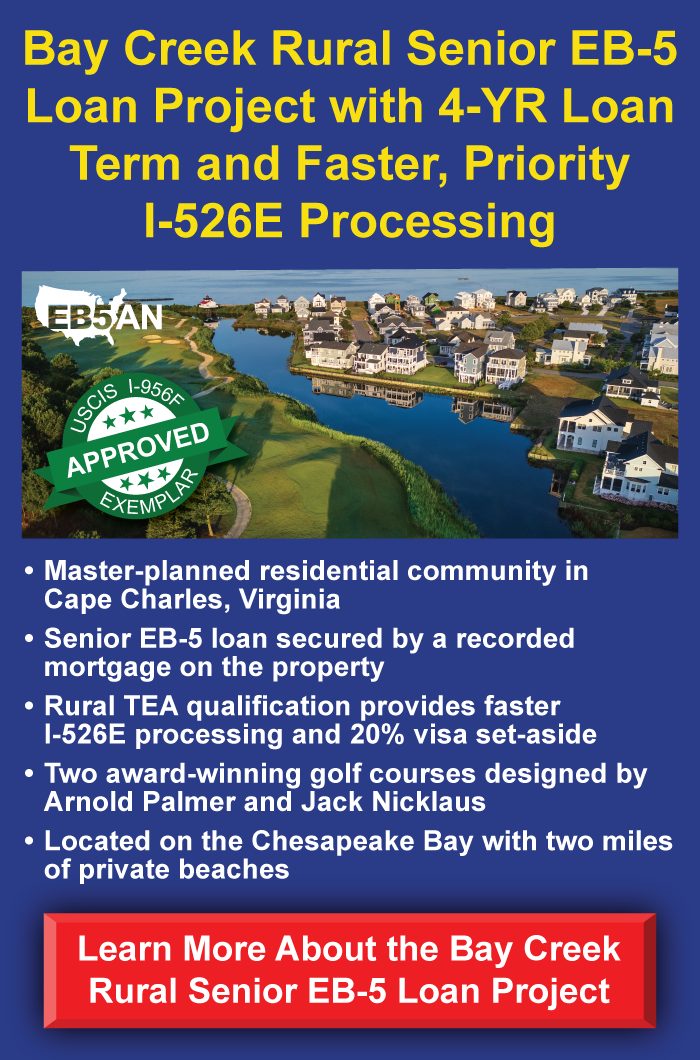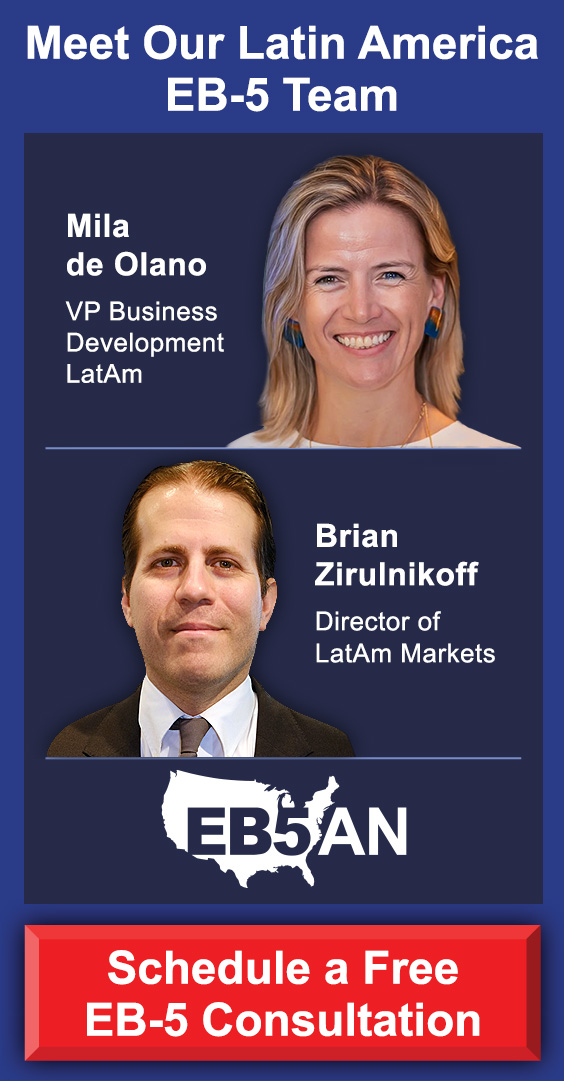The EB-5 Immigrant Investor Program offers a pathway to U.S. permanent residency for international investors who make a qualifying investment that is used to create jobs for U.S. workers.
While the program has helped fund hundreds of large-scale projects across the United States, from hotels to infrastructure to mixed-use developments, its success hinges on one fundamental criterion: job creation. For investors, understanding how these jobs are measured, estimated, and ultimately verified is essential to securing a Green Card.
Although the program allows for a variety of project types, the majority of EB-5 investments today flow through regional centers and rely on economic modeling to calculate their employment impacts.
To help investors understand this process more fully, this article takes a closer look at how job creation is tracked and verified in EB-5 projects and the models used to support those calculations.
Why Job Creation Matters in the EB-5 Program
Direct, Indirect, and Induced Jobs: What Counts?
Economic Models: How Job Creation Is Estimated
Verifying Job Creation at the I-829 Stage
Common Pitfalls and USCIS Challenges
Choosing the Right EB-5 Project
Key Takeaways for EB-5 Investors
Why Job Creation Matters in the EB-5 Program
To qualify for a Green Card through the EB-5 program, each investor must show that their capital investment has created, or will create within a certain time frame, at least 10 full-time jobs for qualified U.S. workers. These jobs must be sustained for a minimum of two years and must be directly or indirectly attributable to the investor’s funds.
On the investor’s side, job creation is an important component of two parts of the EB-5 process.
First, investors must submit evidence of their investment’s potential for job creation alongside their initial EB-5 petition (Form I-526E). This petition is what shows the United States Citizenship and Immigration Services (USCIS) that the investment meets the standards required for a conditional Green Card.
Second, every investor must prove that their investment created and sustained at least 10 jobs for U.S. workers when submitting their petition to remove conditions on permanent residency (Form I-829).
Put simply, job creation isn’t just a metric of economic impact—it’s the lifeblood of the EB-5 process. That’s why it’s so vital for investors to understand how job creation works in the EB-5 context.
Direct, Indirect, and Induced Jobs: What Counts?
EB-5 jobs can be categorized into three groups: direct, indirect, and induced. Each plays a different role depending on the structure of the investment project.
Critically, direct investments—or those not made through a regional center—can only count direct jobs toward their job creation total.
Direct Jobs
Direct jobs refer to full-time positions that appear on the payroll of the enterprise receiving the EB-5 capital.
These tend to be ongoing operational or construction jobs directly related to the project itself.
Indirect Jobs
As the name implies, these are indirectly created by the EB-5 project and its spending.
Some of the most common indirect jobs result from those created along the supply chain at companies that provide materials or services to the EB-5 project, but they can include any other professional service the project may pay a local company to provide.
Induced Jobs
Lastly, induced jobs are those that are created due to the increased spending of workers employed as a result of the project.
Construction workers spending their wages at local stores, for instance, can spur additional hiring in those sectors.
While direct jobs are straightforward to count through employment records, indirect and induced jobs are typically estimated through economic modeling. Regional center projects are allowed to count these latter two categories, provided the estimates are generated using USCIS-accepted methodologies.
Economic Models: How Job Creation Is Estimated
Because not all EB-5 projects generate payroll jobs directly, economists use input-output models to estimate the number of indirect and induced jobs the project should create. These models simulate how money flows through the economy and measure the ripple effects of investment spending.
Two economic modeling systems are most commonly used in EB-5 projects: IMPLAN and RIMS II.
IMPLAN (Impact Analysis for Planning)
IMPLAN is a robust economic modeling tool that uses a complex set of industry data and regional multipliers to forecast the economic impact of an investment. It categorizes effects as direct, indirect, or induced and allows for highly specific, regionally tailored analysis.
To generate the results, economists input data involving spending patterns for nine household income classes weighted by local demographics. IMPLAN then calculates job creation based on the relationships between different sectors in the economy.
For EB-5 purposes, this allows projects to translate investment dollars into a total job count that includes workers employed across multiple industries, not just those hired directly by the project.
RIMS II (Regional Input-Output Modeling System)
Developed by the U.S. Bureau of Economic Analysis, RIMS II uses a system of multipliers to estimate how a dollar spent in a given sector affects employment in the region. It is less customizable than IMPLAN but is often sufficient for projects with simpler capital structures.
Both IMPLAN and RIMS II are accepted by USCIS, but they must be applied carefully, with conservative assumptions and rigorous documentation.
Verifying Job Creation at the I-829 Stage
As mentioned above, initial job estimates support an investor’s I-526E petition, but actual job creation must be demonstrated later, at the I-829 stage.
At this point, USCIS expects evidence that the jobs have been created or will be within a reasonable time.
To prove job creation, the following documentation is typically provided:
- Proof of capital deployment, including bank statements.
- Construction invoices and budgets.
- Payroll records or tax documentation (for direct jobs).
- Operational records showing business activity.
If job creation falls short of projections, USCIS may issue a request for evidence (RFE) or even deny the petition. For this reason, many projects include a job buffer, creating more than 10 jobs per investor to provide a cushion so that every investor meets the minimum threshold.
Common Pitfalls and USCIS Challenges
Economic modeling is accepted but not immune to challenge. USCIS reviewers closely examine the assumptions behind all submitted job creation estimates.
Common issues that trigger scrutiny include the use of overly optimistic multipliers, the misclassification of job types, an inadequate linkage between EB-5 capital and job creation, and outdated or national data instead of local, regional inputs.
To mitigate these risks, reputable regional centers and project developers often work with experienced economists who are familiar with USCIS standards. These experts ensure that all project documentation is accurate and compliant.
Choosing the Right EB-5 Project
For investors, understanding how a project plans to meet the job creation requirement should be central to their due diligence process. Before committing capital, investors should ask how many jobs are projected per investor and whether those jobs are based on construction, operations, or both.
It’s also wise to inquire about the project’s timeline, capital stack (how much EB-5 capital is involved and where it is positioned relative to other capital), and whether a job cushion is in place. An experienced regional center should be able to walk you through these details clearly and transparently.
Key Takeaways for EB-5 Investors
In the EB-5 program, job creation is more than a regulatory requirement. It is the bridge between investment and immigration.
While the use of economic models like IMPLAN and RIMS II allows for a flexible and realistic approach to estimating employment impacts, investors must ensure those projections are grounded in reality and supported by strong documentation.
The success of your EB-5 journey will ultimately depend on whether your funds are used to create the minimum number of jobs and whether such job creation can be credibly verified. A thorough understanding of how this process works is one of the most powerful tools an investor can have.
Another crucial step in your EB-5 journey is partnering with a reputable regional center. That’s where EB5AN comes in.
At EB5AN, transparency is of the utmost importance to us. All of our project documentation uses credible and USCIS-approved estimation models, and we make sure that every investor in our projects has a significant job buffer.
Through this approach, EB5AN has helped more than 2,700 families from 70+ countries become lawful permanent residents of the United States. Our expert team has more than a decade of experience, and we offer our clients first-rate, low-risk EB-5 regional center projects with a 100% USCIS project approval rate.
If you would like to know more about your EB-5 investment options, book a free call with our expert team today.











